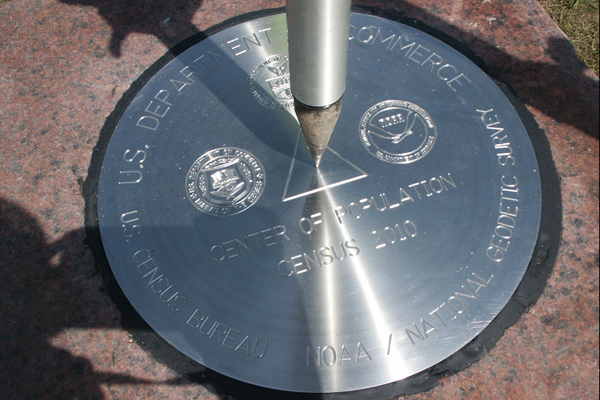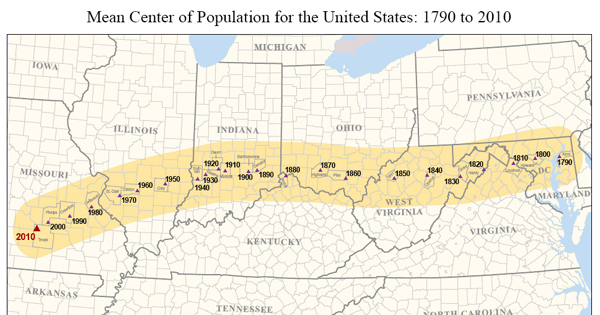Center of U.S. Population Moves West

The center of the United States' population isn't in a big city like New York, Los Angeles or Chicago. No, based on 2010 U.S. Census data, the village of Plato, Mo., has been declared as the center of the country's population. Plato's population? Just 109 people.
The Census Bureau determines the center of population as the place where an imaginary, flat, weightless and rigid map of the United States would balance perfectly if all 308,745,538 residents counted in the 2010 Census were of identical weight. The shift to Plato from nearby Edgar Springs, Mo., which was declared the center of the U.S. population in 2000, represents a continuation of the westward population shift. [Map: U.S. Population Center Moves West]
Calculated by the Census Bureau and measured by the National Oceanic and Atmospheric Administration’s (NOAA) National Geodetic Survey, Plato's status as the national center of population was commemorated using a survey disc. The Census Bureau determines the mean center of population for the country after counting the decennial census every ten years.
"The distance between the centers of population, decade by decade, varies depending on how the population has changed, reflecting the addition of territories and the movement of people," U.S. Census Bureau Director Robert Groves said in a NOAA statement.

Official survey marks have been placed at national centers of population since 1960, and the 2010 mark was calculated at 37.517534 north latitude and 92.173096 west longitude. That places the center of population in Missouri's Texas County, approximately 2.9 miles east of Plato, a small, incorporated village in the heart of the Ozarks.
"We're proud of our village. As one of our students said, 'We were in the middle of nowhere; now we are in the middle of everywhere,'" said Plato village chairman Bob Biram during the placement ceremony of NOAA’s National Geodetic Survey disc.
Follow Remy Melina on Twitter @RemyMelina.
Sign up for the Live Science daily newsletter now
Get the world’s most fascinating discoveries delivered straight to your inbox.
This story was provided by Life's Little Mysteries, a sister site to LiveScience.










